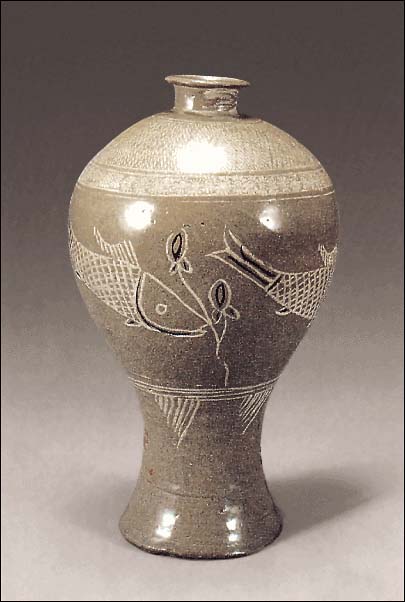
Buncheong Ware
Joseon, 15th c.
h. = 27 cm (10.6 in)
Daegu National Museum
Daegu, Korea
Buncheong ware was produced during the 15th - 16th centuries as a less-refined successor to celadon1,2. It disappeared in Korea after the 1592-1598 Japanese invasions, but was continued in Japan by captive Korean potters as a popular constituent of the tea ceremony.
This maebyeong is decorated with fish and underwater plants. The inlaid design is incised in white slip and highlighted with underglaze iron (black). The top of the vessel, above the fish design, is texturized with a stamped inlay design in white slip that includes a band of crysanthemums on the shoulder of the vessel.
1The production of celadon, a high-value ware, was halted during the unsettled conditions surrounding the fall of the Goryeo dynasty. When the kilns were restarted, they produced porcelain and buncheong. The aristocracy's preference for porcelain over celadon precluded any possibility of a celadon revival, and led to the gradual replacement of buncheong by the late 16th century, even before the Japanese invasions.
2Buncheong ware, much of which was assigned to high-ranking government offices, is variable in sophistication and refinement. Its appreciation is more often expressed in terms like "Bold. Earthy. Dynamic. Modern... experimental" (the Metropolitan Museum of Art) rather than "elegant," "exquisite," or the like. On its own terms, however, the buncheong tradition has produced many distinguished examples of the potter's art.


